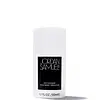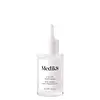What's inside
What's inside
 Key Ingredients
Key Ingredients

 Benefits
Benefits

 Concerns
Concerns

 Ingredients Side-by-side
Ingredients Side-by-side

Aloe Barbadensis Leaf Juice
Skin ConditioningCaprylic/Capric Triglyceride
MaskingWater
Skin ConditioningNiacinamide
SmoothingSaccharomyces/Rice Ferment Filtrate
Skin ConditioningPentylene Glycol
Skin ConditioningCetearyl Olivate
Hydrogenated Starch Hydrolysate
HumectantJojoba Oil/Macadamia Seed Oil Esters
Skin ConditioningButylene Glycol
HumectantCetearyl Glucoside
EmulsifyingSorbitan Olivate
EmulsifyingBrassica Oleracea Italica Seed Oil
EmollientResveratrol
AntioxidantPanthenol
Skin ConditioningHydroxyacetophenone
AntioxidantCetyl Alcohol
EmollientCaprylyl Glycol
Emollient1,2-Hexanediol
Skin ConditioningAstaxanthin
Skin ConditioningPalmitoyl Tripeptide-8
Skin ConditioningAllantoin
Skin ConditioningSqualane
EmollientXanthan Gum
EmulsifyingHibiscus Abelmoschus Extract
MaskingJuglans Regia Seed Extract
Skin ConditioningSodium Phytate
Aphanizomenon Flos-Aquae Extract
HumectantPhytosteryl Macadamiate
Skin ConditioningPhenoxyethanol
PreservativeGlycine Soja Sterols
EmollientEthylhexylglycerin
Skin ConditioningPotassium Sorbate
PreservativeTocopherol
AntioxidantDextran
Alcohol
AntimicrobialAloe Barbadensis Leaf Juice, Caprylic/Capric Triglyceride, Water, Niacinamide, Saccharomyces/Rice Ferment Filtrate, Pentylene Glycol, Cetearyl Olivate, Hydrogenated Starch Hydrolysate, Jojoba Oil/Macadamia Seed Oil Esters, Butylene Glycol, Cetearyl Glucoside, Sorbitan Olivate, Brassica Oleracea Italica Seed Oil, Resveratrol, Panthenol, Hydroxyacetophenone, Cetyl Alcohol, Caprylyl Glycol, 1,2-Hexanediol, Astaxanthin, Palmitoyl Tripeptide-8, Allantoin, Squalane, Xanthan Gum, Hibiscus Abelmoschus Extract, Juglans Regia Seed Extract, Sodium Phytate, Aphanizomenon Flos-Aquae Extract, Phytosteryl Macadamiate, Phenoxyethanol, Glycine Soja Sterols, Ethylhexylglycerin, Potassium Sorbate, Tocopherol, Dextran, Alcohol
Water
Skin ConditioningGlycerin
HumectantButylene Glycol
HumectantInulin
Skin ConditioningSodium Hyaluronate
HumectantPanthenol
Skin ConditioningAlpha-Glucan Oligosaccharide
CleansingCarnosine
Skin ConditioningCarbomer
Emulsion StabilisingPolysorbate 20
EmulsifyingCaprylyl Glycol
EmollientPhenoxyethanol
PreservativeHydroxypropyl Cyclodextrin
MaskingDunaliella Salina Extract
Skin ConditioningEthylhexylglycerin
Skin ConditioningCitric Acid
BufferingPalmitoyl Tripeptide-5
Skin ConditioningSodium Benzoate
MaskingAcetyl Hexapeptide-8
HumectantTetrapeptide-21
Skin ConditioningPentapeptide-18
Skin ConditioningPalmitoyl Tripeptide-1
Skin ConditioningPantolactone
HumectantPalmitoyl Tripeptide-38
Skin ConditioningPalmitoyl Tetrapeptide-7
Skin ConditioningGlyceryl Caprylate
EmollientLactic Acid/Glycolic Acid Copolymer
Skin ConditioningPolyvinyl Alcohol
Phenylpropanol
MaskingCopper Palmitoyl Heptapeptide-14
Skin ConditioningHeptapeptide-15 Palmitate
Skin ConditioningPotassium Sorbate
PreservativeXanthan Gum
EmulsifyingWater, Glycerin, Butylene Glycol, Inulin, Sodium Hyaluronate, Panthenol, Alpha-Glucan Oligosaccharide, Carnosine, Carbomer, Polysorbate 20, Caprylyl Glycol, Phenoxyethanol, Hydroxypropyl Cyclodextrin, Dunaliella Salina Extract, Ethylhexylglycerin, Citric Acid, Palmitoyl Tripeptide-5, Sodium Benzoate, Acetyl Hexapeptide-8, Tetrapeptide-21, Pentapeptide-18, Palmitoyl Tripeptide-1, Pantolactone, Palmitoyl Tripeptide-38, Palmitoyl Tetrapeptide-7, Glyceryl Caprylate, Lactic Acid/Glycolic Acid Copolymer, Polyvinyl Alcohol, Phenylpropanol, Copper Palmitoyl Heptapeptide-14, Heptapeptide-15 Palmitate, Potassium Sorbate, Xanthan Gum
 Reviews
Reviews

Ingredients Explained
These ingredients are found in both products.
Ingredients higher up in an ingredient list are typically present in a larger amount.
Butylene Glycol (or BG) is used within cosmetic products for a few different reasons:
Overall, Butylene Glycol is a safe and well-rounded ingredient that works well with other ingredients.
Though this ingredient works well with most skin types, some people with sensitive skin may experience a reaction such as allergic rashes, closed comedones, or itchiness.
Learn more about Butylene GlycolCaprylyl Glycol is a humectant and emollient, meaning it attracts and preserves moisture.
It is a common ingredient in many products, especially those designed to hydrate skin. The primary benefits are retaining moisture, skin softening, and promoting a healthy skin barrier.
Though Caprylyl Glycol is an alcohol derived from fatty acids, it is not the kind that can dry out skin.
This ingredient is also used as a preservative to extend the life of products. It has slight antimicrobial properties.
Learn more about Caprylyl GlycolEthylhexylglycerin (we can't pronounce this either) is commonly used as a preservative and skin softener. It is derived from glyceryl.
You might see Ethylhexylglycerin often paired with other preservatives such as phenoxyethanol. Ethylhexylglycerin has been found to increase the effectiveness of these other preservatives.
Panthenol is a common ingredient that helps hydrate and soothe the skin. It is found naturally in our skin and hair.
There are two forms of panthenol: D and L.
D-panthenol is also known as dexpanthenol. Most cosmetics use dexpanthenol or a mixture of D and L-panthenol.
Panthenol is famous due to its ability to go deeper into the skin's layers. Using this ingredient has numerous pros (and no cons):
Like hyaluronic acid, panthenol is a humectant. Humectants are able to bind and hold large amounts of water to keep skin hydrated.
This ingredient works well for wound healing. It works by increasing tissue in the wound and helps close open wounds.
Once oxidized, panthenol converts to pantothenic acid. Panthothenic acid is found in all living cells.
This ingredient is also referred to as pro-vitamin B5.
Learn more about PanthenolPhenoxyethanol is a preservative that has germicide, antimicrobial, and aromatic properties. Studies show that phenoxyethanol can prevent microbial growth. By itself, it has a scent that is similar to that of a rose.
It's often used in formulations along with Caprylyl Glycol to preserve the shelf life of products.
Potassium Sorbate is a preservative used to prevent yeast and mold in products. It is commonly found in both cosmetic and food products.
This ingredient comes from potassium salt derived from sorbic acid. Sorbic acid is a natural antibiotic and effective against fungus.
Both potassium sorbate and sorbic acid can be found in baked goods, cheeses, dried meats, dried fruit, ice cream, pickles, wine, yogurt, and more.
You'll often find this ingredient used with other preservatives.
Learn more about Potassium SorbateWater. It's the most common cosmetic ingredient of all. You'll usually see it at the top of ingredient lists, meaning that it makes up the largest part of the product.
So why is it so popular? Water most often acts as a solvent - this means that it helps dissolve other ingredients into the formulation.
You'll also recognize water as that liquid we all need to stay alive. If you see this, drink a glass of water. Stay hydrated!
Learn more about WaterXanthan gum is used as a stabilizer and thickener within cosmetic products. It helps give products a sticky, thick feeling - preventing them from being too runny.
On the technical side of things, xanthan gum is a polysaccharide - a combination consisting of multiple sugar molecules bonded together.
Xanthan gum is a pretty common and great ingredient. It is a natural, non-toxic, non-irritating ingredient that is also commonly used in food products.
Learn more about Xanthan Gum